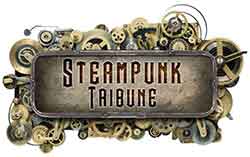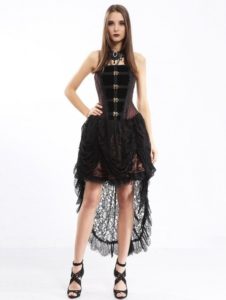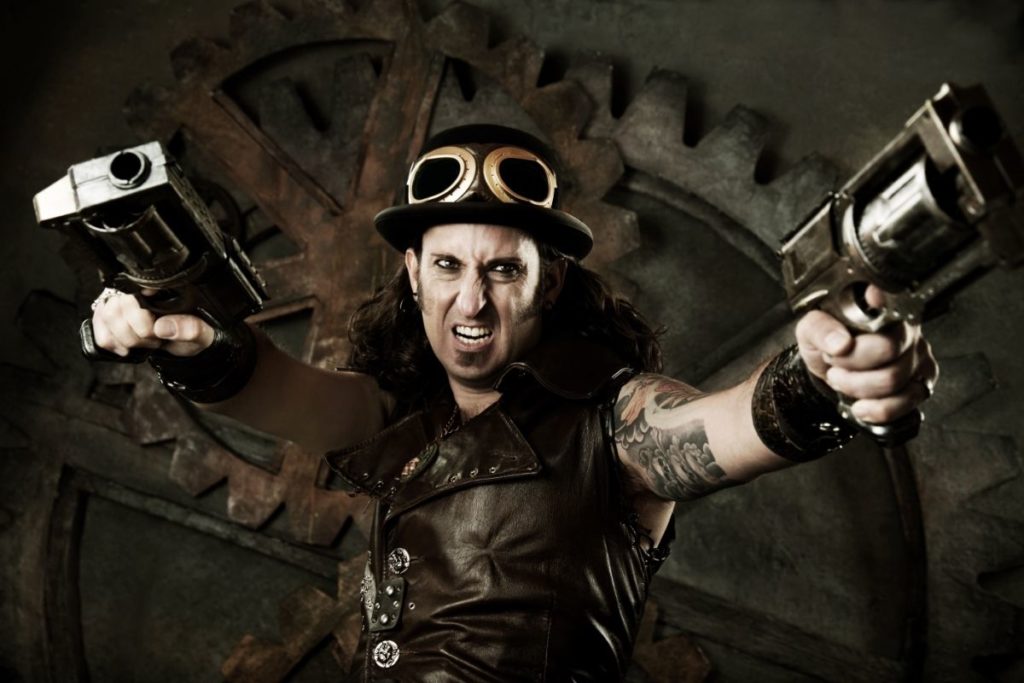The Goth subculture started in the 1970s, and has evolved into one of the largest and most diverse countercultures of the modern day. The ‘Goth’ title is associated with many different things, including art, music, and film. But Gothic fashion in particular is one of the most interesting and complicated aspects of the whole subculture.

So what exactly is Gothic fashion? With so many different variations of the style out there, it can be hard to pin down exactly what makes Goths Goth. Luckily, we’re here to clear things up a bit.
This guide will take you through the background of Gothic fashion, its evolution over time, and some of the most popular types of Gothic fashion from its origin to the present day.
Ready? Then let’s get started!
What Is Gothic Fashion?
Gothic fashion first appeared in the late ‘70s and early ‘80s. The subculture originated from the post-punk era in England, and with the rise of Goth rock that came with it.
Early examples of Goth rock bands include Bauhaus, The Cure, and Siouxsie and the Banshees. The gloomy aesthetics and raw music sparked up new trends, including an interest in the dark and mysterious that developed into the Goth subculture.
When Gothic fashion began in the early ‘80s, it combined parts of the punk aesthetic from the previous decade with aspects of style and art of the 1800s. The color palette was primarily black, while the clothes themselves were shocking and intended to stand out.
Since then, Gothic fashion has developed and evolved over the decades. Nowadays, there are several variations of Gothic fashion that all have unique aspects ranging from the elegant to the dramatic.
However, one thing has stayed the same. Gothic fashion is all about expressing individuality and rejecting conformity. While some types of Goth are a far cry from the original styles of the ‘80s, Gothic fashion still encapsulates the mysterious, the dark, and the outsider.
While gothic fashion often goes hand in hand with other aspects of the subculture (such as music and art), these aren’t necessary for enjoying the style! Dressing in Gothic fashion is a great way to express yourself no matter what you like and enjoy.
The Different Types Of Gothic Fashion
Like all styles and subcultures, there isn’t a single type of gothic fashion. In fact, the very nature of gothic fashion puts individual expression before ‘fitting in’ to a specific niche.
Here’s a look at some of the most popular and prevalent types of gothic fashion.
Traditional Goth
This is the style that started Gothic fashion, and its impact on the aesthetic is still obvious today. Traditional Gothic fashion was almost entirely black with occasional white to create a shocking contrast.
Bands like Bauhaus popularized heavy jackets and tight trousers (as well as oversized sweaters, oddly enough). Other unusual and bold items are also a staple; mesh shirts and leather pants are a common addition to the Traditional Gothic wardrobe.
Another key aspect of Traditional Gothic fashion is hair and makeup. This style of Gothic fashion is characterized by extreme hairstyles and shocking makeup looks, often paired with plenty of piercings.
This goes for both men and women, making Traditional Gothic fashion great for androgynous and gender-neutral looks.
Traditional Goths often style their hair into large spikes, mohawks, and fluffy shag cuts. These typically involve plenty of backcombing and hairspray and can be difficult to maintain.
The makeup is equally provocative. The face is made pale with white foundation, and combined with lipstick, eyeliner, and eyeshadow (all black, of course).
Eyeliner is a particular point of interest, and can range anywhere from large wings to complete blocks covering the entire eyeline. Some Traditional Goths also shave or cover their eyebrows to draw on a more dramatic brow in black.
While modern examples of this style may ditch the mesh tops and suspenders for a more updated look, the early days of striking makeup and all-black outfits remain in full swing to this day.
Victorian Goth
These are a more common type of Goth, and are where most people’s minds go when thinking about the subculture.

Victorian Goths, as the name suggests, take much more influence from the Victorian fashion of the late 1800s and early 1900s than Traditional Goths do. This manifests in a more elegant and ‘refined’ style, with a focus on combining high-end Victorian fashion with the dark aesthetics of the Gothic subculture.
Traditional Gothic fashion has less androgyny than other styles, and men and women have more rigid styles that they adhere to.
Men often wear waistcoats, long overcoats, and top hats. Women, meanwhile, wear corsets and flowing petticoats. Color is included more here, with white undershirts and red lining giving a shocking contrast to the abundance of black.
Victorian Gothic fashion also draws influence from the Gothic fiction genre developing at the time. This includes examples like Frankenstein and (most notably) Dracula.
The parallels between Dracula and Victorian Gothic fashion aren’t just limited to the styles of the period, however. An offshoot of Victorian Gothic fashion, known as Vampire Goths, wear ruffled shirts and veils, and even false fangs.
Steampunk Goth
Steampunk started out as a separate subculture with similar influences to Goths, at around the same time. As such, it’s not surprising that there is a lot of crossover between the two styles.
Steampunk Goths are similar to Victorian Goths in many ways. Both take a lot of influence from the fashion and culture of the end of the 19th century, combining them with the dark aesthetics of Goths of the 1980s.
Steampunk Goths typically wear waistcoats, top hats, long dresses, and other popular items in Victorian Gothic fashion.
What sets Steampunk Goths apart from the rest is their other influences.
Steampunk fiction originated around the same time as Gothic literature in the late 1800s. But where Gothic literature is the cousin of horror, Steampunk is the cousin of science-fiction.
Aspects of sci-fi and fantasy abound in Steampunk Gothic fashion, from goggles on top hats to studded leather corsets. Color plays a much bigger role – the industrial side of Steampunk shows in browns, dark blues, and hints of brass.
Cyber Goth
Gothic fashion has always been non-conformity, and Cyber Goths push that concept to the extreme. Cyber Goth fashion is an amalgamation of different Gothic styles, combining and altering them until they are nearly unrecognizable from their origins.
The mesh shirts and leather trousers of Traditional Gothic fashion are back, while the Victorian Goth’s corsets are also a common sight. Cyber Goths also frequently wear goggles, showing their shared roots with Steampunk Goths.
However, this is where the main similarities end. Apart from some of the core aspects of Gothic fashion, Cyber Goths have their own unique interpretation of the subculture and how it can be expressed.
One of the biggest differences that set Cyber Goths apart is the use of color. Gone are the solid black and occasional splashes of red. Cyber Goth fashion includes a lot of neon colors, from fluorescent green to hot pink to electric blue. These can be in the form of brightly-dyed hair to an accessory.
That’s another thing – Cyber Goths like to accessorize. More popular adornments include fingerless gloves, platform boots, and thick belts.
Cyber Goths are also associated with completely different genres of music compared to other types of Goths. These include EDM, industrial, and nu-metal among others.
In a subculture that prides itself on individuality and shunning the status quo, Cyber Goths stand out with some of the most unusual and memorable styles that Gothic fashion has to offer.
Goth Fashion Staples
With all the differences between different Goth styles, is there anything that stays consistent between them all?
The most significant unifying factor throughout Gothic fashion is its aesthetic. Black is the defining color, even in more colorful styles like Cyber Goths.

The aesthetic includes themes as well as colors, however, and all of these variations still adhere to the same core message as the original Gothic style.
Even more light-hearted variations like Steampunk Goths maintain the melancholic and dark aesthetic as opposed to the fantasy and sci-fi aspects it draws from.
While the clothes themselves may change, Gothic fashion is all about standing out. Whether that be through the strange and brightly-colored outfits of the Cyber Goth to the graceful and elegant Victorian Goth, Gothic fashion celebrates individuality and disregards what society at large deems normal and acceptable.
So while black clothes and striking makeup are clear links between the styles from a material perspective, the real unifying factor of Gothic fashion is the expression of self it allows.
Final Thoughts
So now you know a bit more about what Gothic fashion involves. We hope you’ve enjoyed learning about the origins and development of Gothic fashion, as well as some more popular variations of the original Goth aesthetic throughout its history.
So whether you are interested in getting into Gothic fashion yourself, or simply wanted to learn a little more about this fascinating subculture, now you’re clued up on the ins and outs of Gothic fashion!




